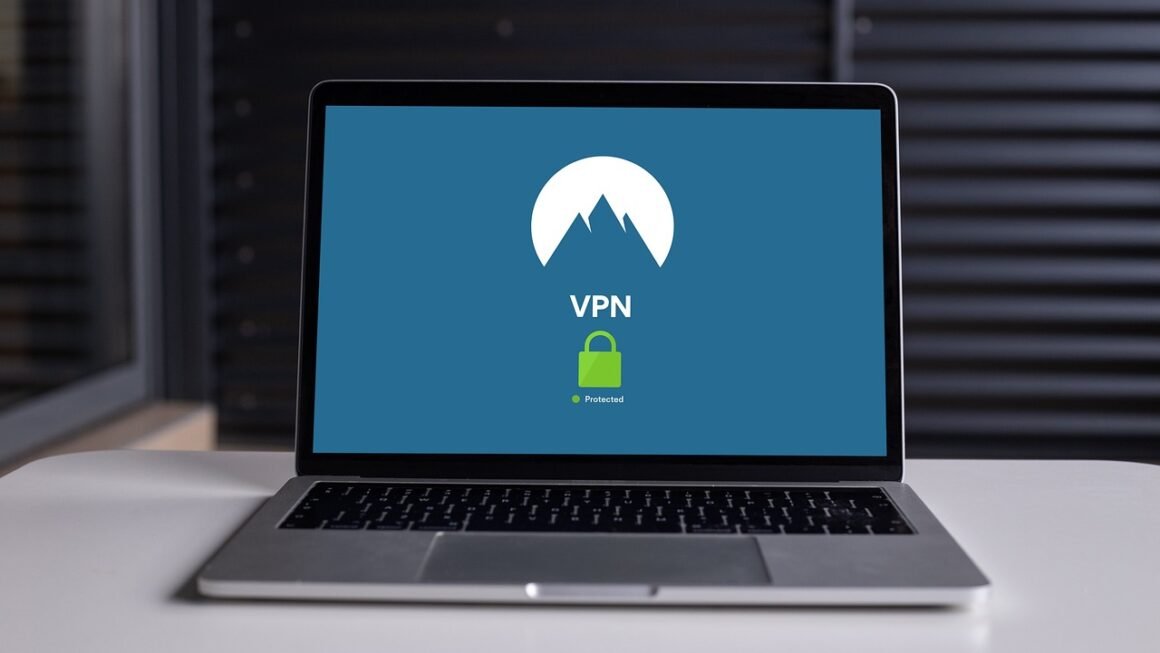In today’s interconnected world, where digital security is paramount, organizations are constantly seeking ways to bolster their defenses against cyber threats. One increasingly popular and effective approach is leveraging the power of ethical hackers through a bug bounty program. These programs offer rewards to individuals who discover and report software vulnerabilities, creating a mutually beneficial relationship between companies and the security community. Let’s delve into the world of bug bounties and explore how they can enhance your organization’s security posture.
What is a Bug Bounty Program?
Definition and Core Principles
A bug bounty program is a structured initiative that invites external security researchers, also known as ethical hackers or white hats, to find and report vulnerabilities in an organization’s systems, applications, or websites. In exchange for their efforts, the organization offers financial rewards, recognition, or other forms of compensation.
- The core principles of a successful bug bounty program include:
Transparency: Clear rules, scope, and reward structure.
Responsiveness: Prompt triage, communication, and remediation.
Fairness: Consistent and impartial assessment of submissions.
Collaboration: Building relationships with the security community.
How Bug Bounties Differ from Traditional Penetration Testing
While both bug bounties and penetration testing aim to identify security flaws, they differ in several key aspects:
- Scope: Penetration tests typically have a defined scope and timeframe, while bug bounties often have a broader scope and are ongoing.
- Participants: Penetration tests are conducted by a small team of security professionals, while bug bounties leverage the collective expertise of a large pool of researchers.
- Cost: Penetration tests are typically priced based on time and resources, while bug bounties operate on a pay-for-results basis.
- Approach: Penetration tests follow a structured methodology, while bug bounties allow researchers to explore vulnerabilities using their preferred techniques.
Advantages of Implementing a Bug Bounty Program
Implementing a bug bounty program offers numerous advantages for organizations seeking to improve their security posture:
- Wider Coverage: Access to a larger pool of talent and diverse skill sets.
- Continuous Testing: Ongoing security assessment and vulnerability discovery.
- Cost-Effectiveness: Pay only for valid vulnerabilities reported.
- Proactive Security: Identifies and addresses vulnerabilities before malicious actors can exploit them.
- Community Engagement: Builds relationships with the security community and fosters a culture of security.
- Reduced Risk: Minimizes the potential impact of security breaches.
Designing an Effective Bug Bounty Program
Defining Scope and Rules of Engagement
Clearly defining the scope and rules of engagement is crucial for a successful bug bounty program. The scope should specify which assets are in-scope and out-of-scope for testing.
- In-scope assets: Websites, applications, APIs, infrastructure components.
- Out-of-scope assets: Third-party applications, production data (depending on the program), denial-of-service (DoS) attacks (typically prohibited).
The rules of engagement should outline the acceptable testing methods, reporting procedures, and ethical guidelines.
- Researchers should be prohibited from:
Disclosing vulnerabilities publicly before they are fixed.
Accessing or modifying production data without authorization.
Performing DoS attacks or other disruptive activities.
Exploiting vulnerabilities beyond the minimum necessary to demonstrate impact.
Establishing a Clear Reward Structure
A well-defined reward structure is essential for attracting and incentivizing researchers. The reward amounts should be commensurate with the severity and impact of the reported vulnerabilities.
- Common vulnerability severity levels and reward ranges:
Critical: $5,000 – $50,000+ (e.g., remote code execution, privilege escalation)
High: $2,000 – $10,000 (e.g., SQL injection, cross-site scripting)
Medium: $500 – $2,000 (e.g., information disclosure, authentication bypass)
Low: $100 – $500 (e.g., minor XSS, CSRF, outdated software versions)
Example: A bug bounty program might offer $10,000 for a critical vulnerability that allows an attacker to gain unauthorized access to sensitive customer data, while offering $500 for a low-severity vulnerability that exposes non-sensitive information.
Choosing the Right Bug Bounty Platform
Several bug bounty platforms are available, each offering different features and capabilities. Popular platforms include HackerOne, Bugcrowd, and Intigriti.
- Consider the following factors when choosing a platform:
Researcher Community: The size and quality of the researcher pool.
Platform Features: Vulnerability management, reporting, payment processing.
Pricing: Platform fees and reward structures.
Support: Level of support and responsiveness.
Organizations can also choose to run a private, invite-only bug bounty program using their own internal resources. However, utilizing a dedicated platform offers advantages in terms of scalability, researcher management, and payment processing.
Managing and Triaging Vulnerability Reports
Establishing a Triage Process
Efficiently managing and triaging vulnerability reports is crucial for a successful bug bounty program. A dedicated security team should be responsible for reviewing submissions, verifying vulnerabilities, and prioritizing remediation efforts.
- The triage process should include the following steps:
1. Initial Review: Assess the submission for completeness and validity.
2. Vulnerability Verification: Confirm the existence and impact of the reported vulnerability.
3. Severity Assessment: Determine the severity of the vulnerability based on its potential impact.
4. Duplication Check: Identify and close duplicate reports.
5. Communication: Keep the researcher informed of the status of their submission.
Prioritizing Vulnerability Remediation
Prioritizing vulnerability remediation is essential for effectively managing security risks. Vulnerabilities should be prioritized based on their severity, exploitability, and potential impact.
- Consider the following factors when prioritizing remediation:
Vulnerability Severity: Critical vulnerabilities should be addressed immediately.
Exploitability: Vulnerabilities that are easily exploitable should be prioritized.
Asset Value: Vulnerabilities affecting critical assets should be addressed first.
Business Impact: Vulnerabilities that could disrupt business operations should be prioritized.
Communicating with Researchers
Maintaining clear and consistent communication with researchers is essential for building trust and fostering a positive relationship.
- Provide timely updates on the status of their submissions.
- Explain the reasoning behind decisions regarding severity and reward amounts.
- Acknowledge and appreciate their contributions.
- Encourage them to continue participating in the program.
Legal and Ethical Considerations
Defining Legal Boundaries
It’s crucial to define legal boundaries within your bug bounty program to protect both the organization and the participating researchers.
- Safe Harbor Clause: This provides legal protection to researchers who discover vulnerabilities within the defined scope and adhere to the program rules. It typically states that the organization will not pursue legal action against researchers for their good-faith efforts to find and report security flaws.
- Terms of Service: These should clearly outline the acceptable testing methods, prohibited activities, and data handling practices.
- Compliance with Laws: Ensure the program complies with all applicable laws and regulations, including data privacy laws and export control regulations.
Ethical Guidelines for Researchers
Researchers participating in bug bounty programs must adhere to ethical guidelines to ensure responsible vulnerability disclosure and prevent harm.
- Do no harm: Avoid causing damage to systems, data, or users.
- Maintain confidentiality: Protect sensitive information discovered during testing.
- Disclose responsibly: Report vulnerabilities directly to the organization and allow them a reasonable timeframe to fix them before public disclosure.
- Obtain authorization: Only test assets that are within the defined scope and with the organization’s explicit permission.
Handling Sensitive Data
Special care must be taken when handling sensitive data during bug bounty programs.
- Data Minimization: Limit the amount of sensitive data that researchers have access to.
- Data Masking: Mask or anonymize sensitive data to prevent unauthorized access.
- Secure Communication: Use secure channels for communication and data transfer.
- Data Retention Policies: Establish clear data retention policies for vulnerability reports and related data.
Conclusion
Bug bounty programs are a valuable tool for organizations seeking to enhance their security posture and proactively identify vulnerabilities. By engaging with the security community and offering rewards for responsible vulnerability disclosure, organizations can significantly improve their defenses against cyber threats. A well-designed and managed bug bounty program can provide continuous security testing, cost-effective vulnerability identification, and a stronger overall security posture. Remember to define a clear scope, establish a fair reward structure, and maintain open communication with researchers to maximize the benefits of your bug bounty program.



